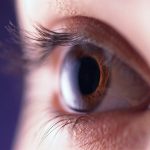
Most folks think of blinking as the eyes’ version of windshield wipers, clearing the eye of debris and maybe lubricating it, too. But blinking is much more than that, researchers report: It also helps the brain process what it’s seeing. That’s perhaps counterintuitive: Wouldn’t it make sense to not blink, so eyes are receiving an uninterrupted stream of information? Already, scientists have long known that people blink far more often than is needed just to moisten the eye. Investigating further, a team led by Michele Rucci, a professor of brain and cognitive sciences at the University of Rochester, tracked the eye movements of folks looking at different types of stimuli. They combined that data with computer modeling and found that blinking enhances a person’s ability to track “big, gradually changing patterns” in a visual field, according to a university news release. Blinking does so by altering light patterns as they strike and stimulate the eye’s retina. It creates a different kind of ‘visual signaling’ than would occur if eyes simply remained open at all times, the researchers explained. So, “contrary to common assumption, blinks improve — rather than disrupt– visual processing, amply compensating for the loss in stimulus exposure,” said study first author Bin Yang, a graduate student working in Rucci’s lab. The findings, published recently in the Proceedings of the National Academies of Science,… read on > read on >


































-300x200.jpg)



